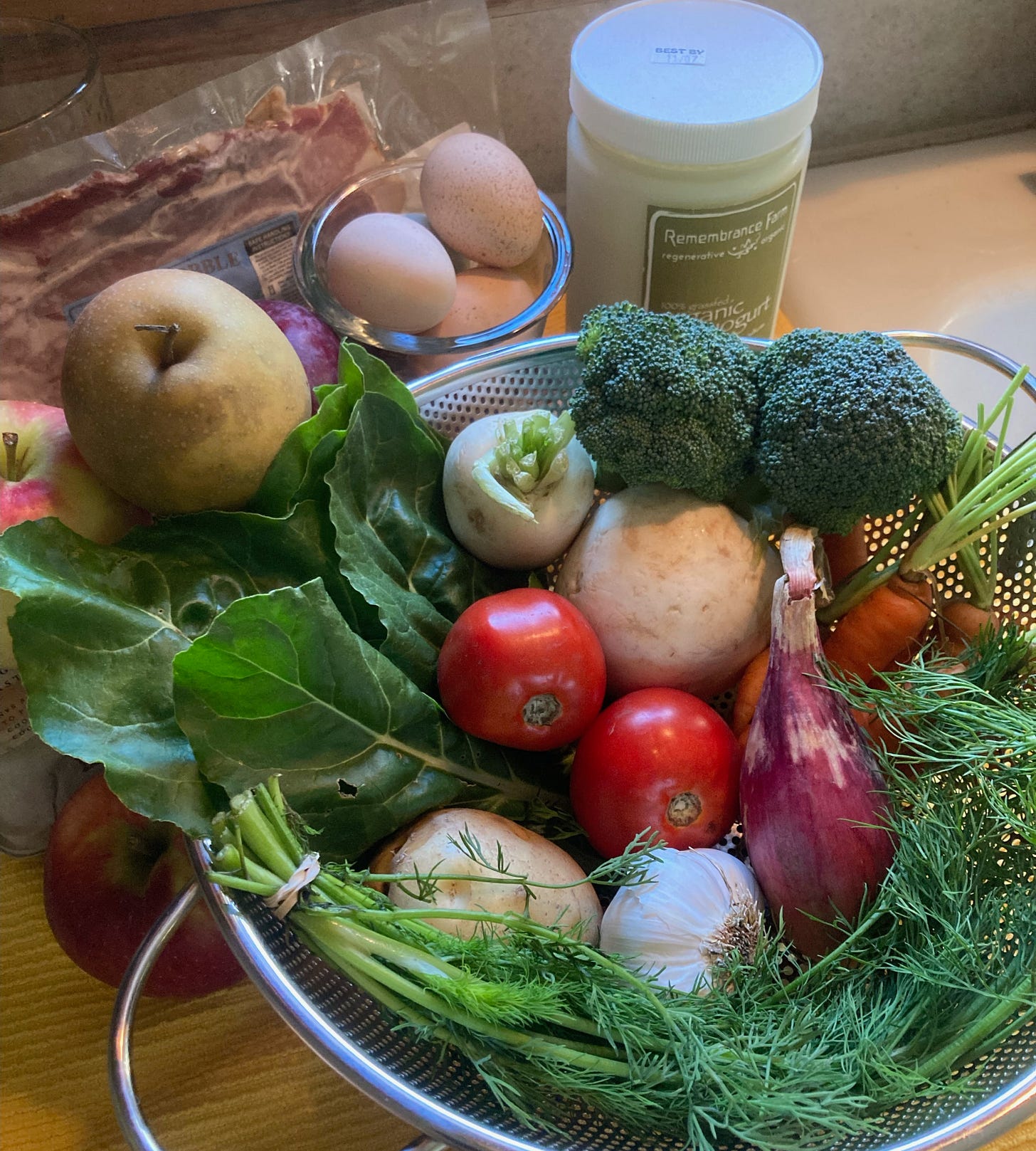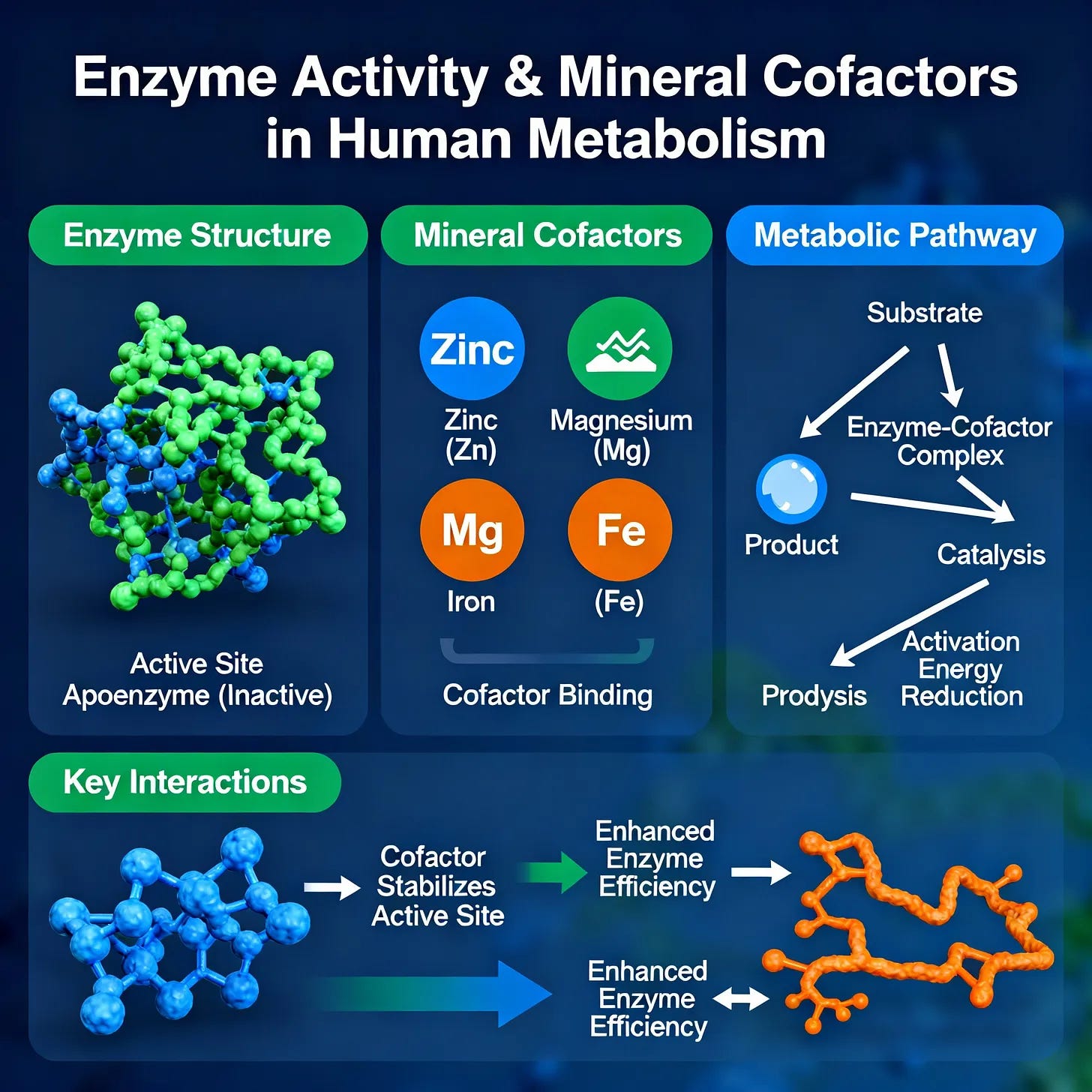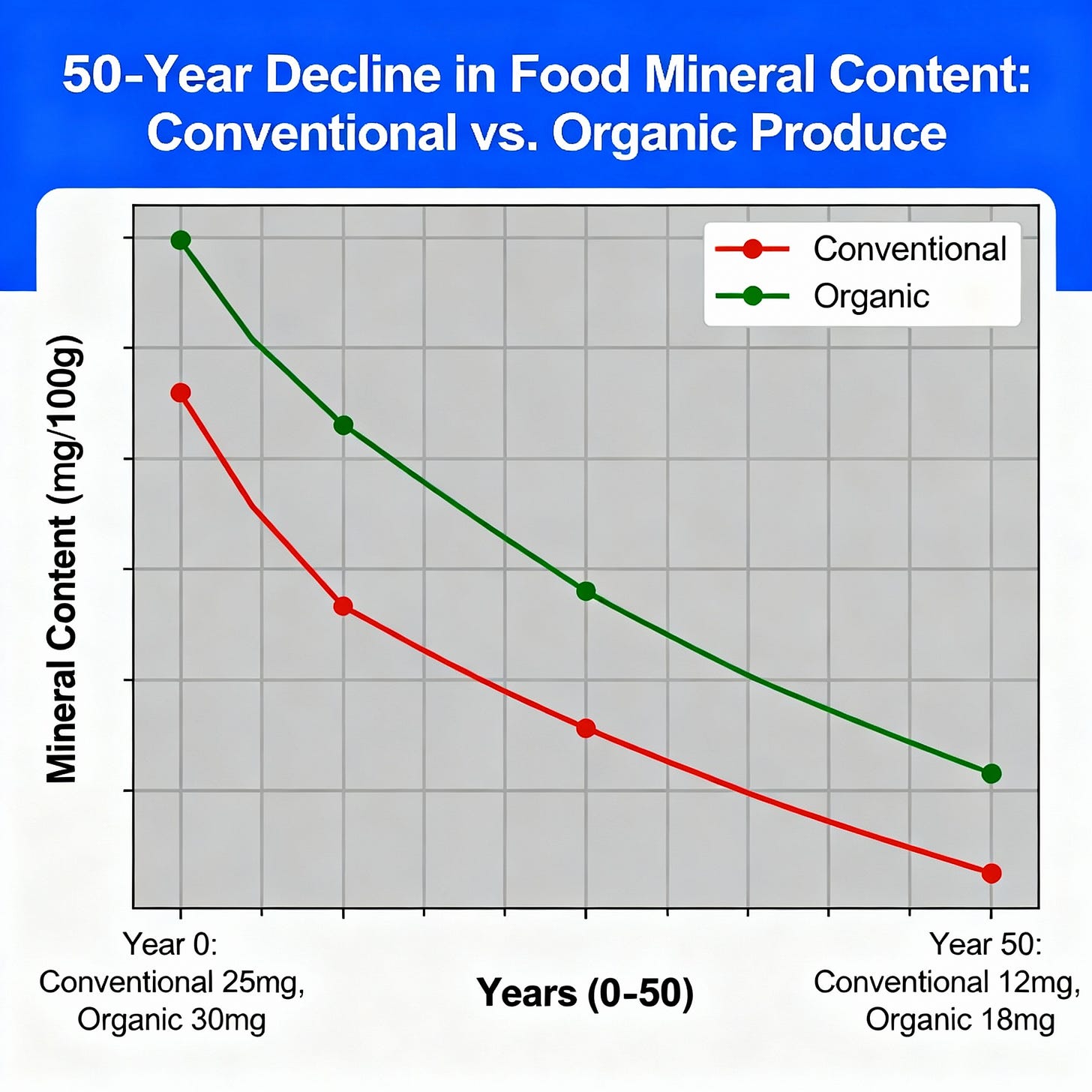When the soil runs out, so do we
Why modern food feeds us less than before
Gettin’ down on the mountain
I love Spotify (no financial conflict of interest here, I swear). For decades I missed out on cool music, because I couldn’t afford to buy records, then CDs, or go to concerts to listen to musicians that my friends talked about. Now for the low cost of $17 per month, my wife and I can listen as much or as little music as we want.
It’s pretty fun to discover new music. I get inspired, and go on a search. After we watched Forgetting Sarah Marshall, a funny break up movie starring Jason Segel and set in Hawaii, I spent weeks looking up and listening to Hawaiian singers and music. That is when Raiaeta Helm came into my life, or at least my imagination. Check out Kaupo from her album He Leo Huali. I didn’t know that Hawaiian music could be so good, or this beeeaauuutiiiful!
We made a pre-pandemic road trip to Ottawa one bitter cold February, so that we could skate outdoors on the Rideau Canal at -40C (and eat bear claws by the snack shack). After that trip I went on a prolonged search for Canadian singers, particularly French-Canadian or Quebecois singers. That was when I came across Corb Lund. I would describe his music as a cross between the authentic lyrics of Johnny Cash, the wry humor of the Canadian prairies, with a dash of alcoholism thrown in for good measure. One of my favorite songs is a duet with Jaidya Dryer called “I think you oughta try whiskey.” In a nod to his ranching ways on the Canadian prairie, Lund penned a song called “Truck got stuck.” If this doesn’t put a smile on your face, then you haven’t lived in the country, and ain’t never got stuck in a ditch.
In 2012 Corb Lund released a song called “Gettin’ down on the mountain.” I associate it with the pandemic, because A) he grouped in a Spotify post he made of songs he leaned on to get through that period and B) it paints a gritty picture of a post-apocalyptic time in which the oil has finally run out. People need to survive by their quick wits and bullets are more reliable currency than worthless paper money.
Gettin’ Down on the Mountain lyrics by Corb Lund and the Hurtin’ Albertans 2012
When the oil stops, everything stops, nothing left in the fountain
Nobody wants paper money, son, so you just well stop countin’
Can you break the horse? Can you light the fire? What’s that, I beg your pardon?
You best start thinking where food comes from and I hope you tend a good garden
Gettin’ down the mountain
Gettin’ down the mountain
Don’t wanna be around when the shit goes down
I’ll be gettin’ down the mountain
When the truck don’t run, the bread don’t come, have a hard time finding petrol
Water ain’t runnin’ in the city no more, do you hold any precious metal?
Can you gut the fish? Can you read the sky? What’s that about overcrowdin’?
You ever seen a man who’s kids ain’t ate for 17 days and countin’?
Gettin’ down the mountain
Gettin’ down the mountain
Don’t wanna be around when the shit goes down
I’ll be gettin’ down the mountain
This is just the way my mind works…life…music…stories. When I was thinking of a follow up article to my last Substack, Earth’s Quiet Alchemy, the title came to me. It’s not just about when the oil runs out. It’s also what happens when the soil runs out. How to talk about enzymes, trace minerals, soil and health without putting readers to sleep, and leaving you wondering, “What the heck happened to writing about post acute sequelae of Covid and vaccine injury?” If you’ve been reading Lightning Bug long enough, you might, maybe, trust that as The Staple Singers crooned, I’ll Take You There. Just give me time. If that doesn’t work for you, think of the black t-shirt I used to own. In white block lettering, it said:
I’M A BOMB TECHNICIAN
IF YOU SEE ME RUNNING
TRY TO KEEP UP
The chemistry of life: how enzymes make it possible
Every second, the human body performs billions of chemical reactions—digesting food, creating hormones, producing energy, repairing cells, and detoxifying harmful byproducts. These reactions wouldn’t happen fast enough to sustain life without enzymes, highly specialized proteins that act as molecular catalysts.
Each enzyme is built to handle a specific job, like cutting, connecting, or transforming one molecule into another. For example, digestive enzymes like lipase break down fats; polymerases build DNA; and antioxidant enzymes disarm reactive oxygen species that would otherwise damage cells. Without enzymes, metabolism would crawl to a stop.
How much we currently know
Despite a century of research, enzymes are still only partly understood. Scientists estimate that humans have between 2,700 and 75,000 distinct enzymes, depending on how you count unique forms and variants. About half are well characterized; the rest remain “orphan enzymes”—proteins known to exist but without clearly identified roles.pubmed.ncbi.nlm.nih+2
Our incomplete understanding comes partly from historical technological limits. Until the invention of inductively coupled plasma mass spectrometry (ICP‑MS) in 1983, scientists couldn’t measure trace metals like zinc, manganese, or molybdenum at the tiny concentrations found inside cells. That means we’ve only recently begun to see which enzymes depend on these trace minerals to function correctly. This missing knowledge leaves open an important question: how many enzymes might still rely on undiscovered mineral partners?spectroscopyonline+1
Why enzymes lead us to minerals
The link between enzymes and trace minerals is direct and critical. Enzymes often require cofactors—small nonprotein helpers—to do their work. Many cofactors are minerals, or more precisely, metal ions that attach to enzymes and enable catalysis. These metal ions can stabilize enzyme shape, drive electron transfers, or help break chemical bonds.wholisticmatters+2
In biochemical terms, these mineral cofactors turn an inactive “apoenzyme” into an active “holoenzyme.” In simple language: no mineral, no function. Magnesium, zinc, and iron are among the most important, but at least 20 different elements play these roles in living systems. Without adequate mineral intake, hundreds of essential reactions—from DNA synthesis to antioxidant defense—slow down or stop altogether.ncbi.nlm.nih+1
The disappearing minerals: food, soil, and enzyme potential
The minerals our enzymes need come from the soil, where plants absorb them through their roots. Animals then eat the plants, and humans receive those nutrients through both plant and animal foods. When soil minerals decline, everything in the food chain follows.
Studies comparing crops from the 1950s to today show consistent nutrient declines. A major USDA analysis found calcium down 27%, iron down 37%, and phosphorus down 28% in fruits and vegetables. Similar results across the past two decades show a continuing 1–2% nutrient loss per decade.pubmed.ncbi.nlm.nih+1
This decline isn’t just about farming speed—it’s about soil health. Heavy fertilizer use replenishes nitrogen, phosphorus, and potassium but ignores dozens of micronutrients. Meanwhile, monocropping, soil erosion, and loss of microbial life reduce the natural mineral recycling that once enriched the land. As a result, the raw materials that many human enzymes depend on have quietly diminished over time.ers.usda
Organic and regenerative farming: restoring balance
Organic and regenerative farms usually produce crops with 20–30% higher levels of trace minerals such as magnesium, iron, and phosphorus. This improvement doesn’t come from luck—it comes from healthier soil systems. Microbes in organic soil break down minerals into forms plants can absorb, restoring the ancient partnership between soil life and nutrition. While organic practices can’t fully reverse decades of depletion, they slow the trend dramatically and improve the nutrient base on which enzymes depend.pmc.ncbi.nlm.nih+1
Why this matters for human health
When enzymes lose access to their mineral cofactors, problems start quietly but grow over time. Mild deficiencies in magnesium, zinc, or selenium can weaken digestion, energy production, immune response, and antioxidant defenses. Because enzymes work in coordinated networks, a flaw in one reaction creates ripple effects in others—an invisible slowdown in the chemistry of life.pubmed.ncbi.nlm.nih
In simple terms, enzyme health mirrors soil health. If the land loses its minerals, so do people. The enzymes in our cells reflect the mineral balance of our environment, linking agriculture, biology, and human well‑being in a continuous chain.
The bottom line
Enzymes are the engines of life, and minerals are their fuel. Until the 1980s, scientists couldn’t even see many of these mineral relationships; now, new technologies are revealing how deeply our biology depends on trace elements. Yet while we’ve begun to understand the molecular science, restoring soil minerals remains the practical challenge ahead.
Supporting regenerative agriculture and mineral-rich soil management isn’t only about sustainability—it’s about keeping the fundamental machinery of human metabolism running at full strength. When the soil thrives, our enzymes—and our health—do too.
https://store.mayoclinic.com/education/what-are-trace-minerals-and-why-are-they-important/
https://wholisticmatters.com/minerals-as-inorganic-cofactors-for-healthy-cells/
https://www.traceminerals.com/blogs/nutrition/are-trace-minerals-good-for-you
https://openoregon.pressbooks.pub/nutritionscience/chapter/9e-energy-metabolism-vitamins-minerals/
https://www.sciencedirect.com/science/article/pii/S2405844024043196
Addendum; citations for figure 2.
The copyright‑free graph showing the 50‑year decline in food mineral content (conventional vs. organic) was based on publicly available peer‑reviewed and governmental data. Its information sources are as follows:
USDA food composition data (1950–1999) –
Davis, D. R., Epp, M. D., & Riordan, H. D. (2004). Changes in USDA Food Composition Data for 43 Garden Crops, 1950 to 1999. Journal of the American College of Nutrition, 23(6), 669–682. DOI: 10.1080/07315724.2004.10719409.pubmed.ncbi.nlm.nih+2
– Documented statistically significant median declines of 6–38% across calcium, iron, phosphorus, riboflavin, and ascorbic acid.Modern nutrient declines and soil‑based causes –
An Alarming Decline in the Nutritional Quality of Foods. Frontiers in Nutrition (2024). PMID: PMC10969708.pmc.ncbi.nlm.nih
– Reviewed global evidence for nutrient density loss and attributed reductions primarily to soil degradation, fertilizer imbalance, and long‑term soil organic matter depletion.Organic vs. conventional mineral comparison –
Woźniakowski, K. et al. (2024). A Comprehensive Analysis of Organic Food: Evaluating Nutritional and Mineral Content Differences. Nutrients, 16(1), 1045. PMID: PMC10814746.pmc.ncbi.nlm.nih
– Reported 21% higher iron and 29% higher magnesium levels in organic vegetables, and 20–30% higher magnesium, phosphorus, and potassium in organic corn.Nutrient management and soil health context –
United States Department of Agriculture, Economic Research Service (2025). Crop & Livestock Practices: Nutrient Management. ERS Report..ers.usda
– Provided policy data on soil nutrient depletion trends, fertilizer imbalance, and documented mineral losses in U.S. agricultural soils.Historical and corroborative data –
Smith, J., et al. (2025). The Missing Link: Soil Health and Nutrition Crisis. Heinrich Boell Foundation, 2025–02–26..boell
– Summarized aggregate losses of 6–38% for calcium, iron, phosphorus, and riboflavin in major food crops between 1950 and 2020.
All numerical values in the graph (e.g., the 20–50% mineral decline for conventional produce vs. 15–30% higher levels in organic crops) were drawn from these peer‑reviewed and U.S. governmental datasets.






Truly appreciate all the time and effort you must put forth to share this important info.
Many Thanks!!
Yes. I smiled for the stuck trucks party!🤭❤️🙏